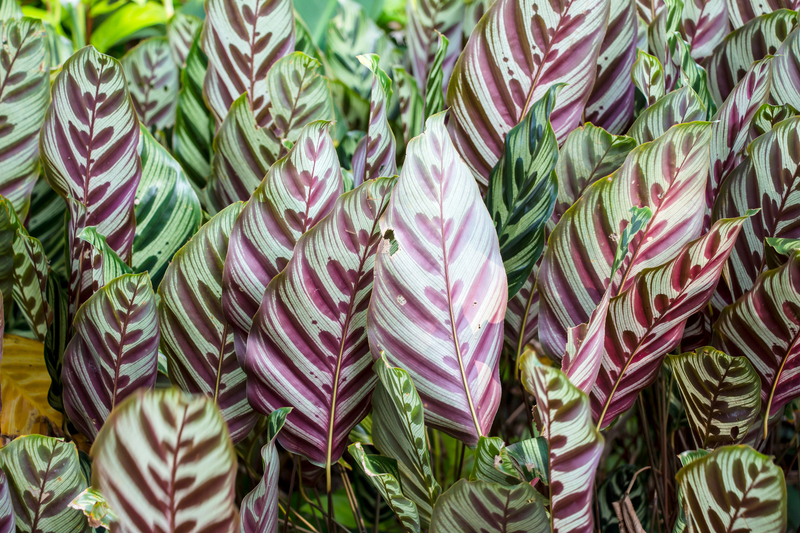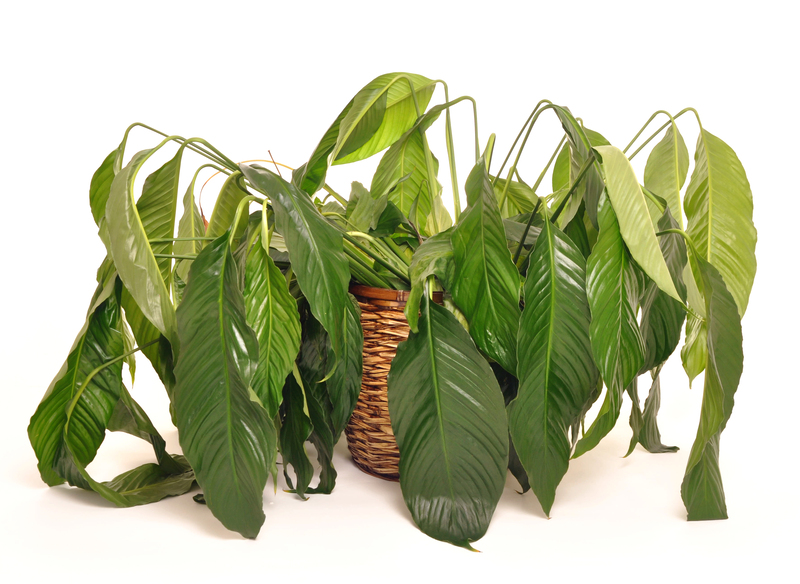Kickstart Your Journey to a Thriving Herb Garden
Posted on 02/06/2025
Kickstart Your Journey to a Thriving Herb Garden
Are you dreaming of enchanting aromas wafting through your kitchen, vibrant green leaves at your fingertips, and the satisfaction of home-grown flavor? If so, it's time to kickstart your journey to a thriving herb garden! Cultivating your own herbs isn't just for expert gardeners; it's an accessible, rewarding, and sustainable way to enhance your meals and your wellbeing. Whether you're working with a spacious backyard or a sunny windowsill, this comprehensive guide will help you plant the roots for a thriving herb oasis.
Why Start Your Own Herb Garden?
Embarking on a home herb garden journey comes with a multitude of benefits. Here are some compelling reasons to grow your own herb garden:
- Freshness and Flavor: Nothing beats the taste of freshly harvested basil, mint, or rosemary.
- Convenience: Enjoy instant access to your favorite herbs anytime you need them.
- Cost Savings: Growing herbs at home is cost-effective compared to purchasing small bunches at the market.
- Health Benefits: Many herbs have antioxidants, vitamins, and medicinal properties.
- Eco-Friendly: Reduces packaging waste and carbon footprint associated with store-bought herbs.
Ready to kickstart your journey to a flourishing herb garden? Let's dig into the basics!

Choosing the Best Spot for Your Herb Garden
Outdoor Herb Gardens
Most culinary herbs thrive in full sun (at least 6-8 hours a day), but don't worry if your garden only has partial shade; some herbs like mint, parsley, and chives can tolerate less sunlight. Before you plant, consider the following:
- Soil Quality: Herbs prefer well-draining, fertile soil. Amend clay or sandy soil with compost for best results.
- Accessibility: Plant herbs near your kitchen or an outdoor seating area for quick harvesting and enjoyment.
- Space: Even a small patch or raised bed can support a healthy herb collection.
- Water Source: Choose a location that's easy to water regularly.
Indoor Herb Gardens
No backyard? No problem! Indoor herb gardens are perfect for urban gardeners or those with limited space. Here's how to find the ideal spot indoors:
- Light Requirements: Place pots on a windowsill that receives at least 5-6 hours of bright, indirect sunlight daily.
- Temperature: Most herbs prefer temperatures between 60-70?F (15-21?C).
- Air Circulation: Avoid overcrowded shelves to prevent mold and mildew.
- Watering: Use pots with drainage holes and trays to avoid soggy soil and root rot.
Selecting the Right Herbs for Your Garden
One of the joys of a successful herb garden journey is choosing the scents and flavors you love most. Start with popular, easy-to-grow herbs to build your confidence and ensure success.
Top 10 Beginner-Friendly Herbs
- Basil: Perfect for Italian dishes, pesto, and fresh salads.
- Mint: Great for teas, desserts, and refreshing drinks.
- Chives: Delicate onion flavor for salads and garnishes.
- Parsley: Versatile and rich in nutrients.
- Cilantro: Essential for Mexican and Asian cuisine.
- Rosemary: Woody aroma, ideal for roasts and bread.
- Thyme: Adds depth to soups, stews, and chicken dishes.
- Oregano: Signature herb for Mediterranean and pizza recipes.
- Dill: Pairs beautifully with fish and potatoes.
- Sage: Robust flavor for poultry and stuffing.
Tip: Consider your climate and culinary preferences when selecting herbs. For instance, Mediterranean herbs like oregano, lavender, and rosemary thrive in well-draining soil and full sun.
Growing Herbs from Seeds vs. Seedlings
Deciding whether to start from seeds or buy established seedlings depends on your time frame and gardening confidence.
Growing from Seeds
- Cost-effective and offers a wide variety.
- Requires patience, as germination can take 7-21 days.
- Best for: Basil, cilantro, dill, and parsley, which sprout easily from seeds.
Planting Seedlings
- Faster results: Harvest within weeks.
- Easier for beginners as the plants are already established.
- Best for: Rosemary, thyme, oregano, and sage, which can be slow to germinate from seeds.
Whichever method you choose, remember to follow seed packet or label instructions for best results.
How to Plant Your Herbs for Maximum Success
Step-by-Step Guide for Outdoor Herb Planting
- Prepare the Soil: Loosen soil to 8-10 inches deep and mix in compost.
- Plan Your Layout: Group herbs with similar sunlight and water needs together.
- Spacing: Give each plant enough space to spread. Most herbs prefer 12-18 inches between plants.
- Plant Carefully: Sow seeds at the recommended depth, or plant seedlings at the same depth as their nursery pots.
- Water Thoroughly: Gently water newly planted herbs to settle the soil.
Easy Steps for Indoor Herb Gardens
- Choose Containers: Use pots with drainage holes to prevent root rot.
- Use High-Quality Potting Mix: Opt for a light, well-draining mix rather than garden soil.
- Plant Seeds or Seedlings: Gently firm seeds or transplant seedlings and water.
- Place in Sunlight: Position plants in a bright spot; supplement with grow lights if needed.
- Monitor Moisture: Allow the soil to dry slightly between waterings to avoid overwatering.
Caring for Your Herb Garden
A flourishing home herb garden needs attention and care, but herbs are relatively low-maintenance. Here are essential tips to keep your garden thriving:
- Watering: Most herbs prefer evenly moist, but not soggy, soil. Water early in the day to minimize evaporation.
- Feeding: Feed with a diluted organic liquid fertilizer every few weeks during growing season.
- Pruning: Regularly pinch or cut the tips to encourage bushier growth and prevent flowering (bolting).
- Pest Control: Watch for aphids, spider mites, and snails. Use natural remedies where possible.
- Mulching: Mulch outdoor herbs to retain moisture and suppress weeds.
- Rotating: Rotate pots and move them outdoors in warmer months for extra sunlight.
Tip: *Harvest herbs early in the day when their essential oils are at their peak for the best flavor and aroma.*
Common Challenges and How to Overcome Them
Leggy or Weak Growth
If your herbs are stretching and appearing weak, they might not be getting enough sunlight. Move them to a brighter location or invest in a grow light.
Yellow Leaves
This could indicate overwatering or poor drainage. Always check soil moisture before adding more water and ensure pots drain well.
Pests and Diseases
Aphids, fungal spots, and powdery mildew can affect herb gardens. Use neem oil or insecticidal soap as a natural remedy and remove infected leaves promptly.
Bolt or Flowering Too Soon
Some herbs, like basil and cilantro, can bolt in hot weather. Harvest regularly, keep well-watered, and provide shade during high heat.
Harvesting and Storing Your Herbs
Congratulations! Once your herb garden is flourishing, it's time to bask in the rewards. Here's how to harvest and preserve your herbs for maximum flavor:
- Harvest Early: Cut herbs before they flower for the best taste.
- Use Clean Tools: Always use clean, sharp scissors or shears to avoid disease.
- Take Only a Third: Never remove more than a third of the plant at once to ensure ongoing growth.
- Storing Fresh Herbs: Place stems in water like a bouquet, or wrap in damp paper towels in the fridge.
- Drying: Air dry or use a dehydrator for storing excess herbs, then keep in airtight jars.
- Freezing: Chop herbs and freeze in ice cube trays with olive oil or water for handy portions.
Creative Uses and Benefits of Homegrown Herbs
Your herb garden journey doesn't stop at the kitchen! Explore the many ways to enjoy herbs at home:
- Culinary Enhancements: Fresh pesto, herbal butters, and infused oils.
- Herbal Teas: Brew soothing blends with mint, chamomile, or lemon balm.
- Natural Remedies: Use herbs for homemade salves and soothing balms (like calendula or lavender).
- Decorative Arrangements: Fragrant bouquets of rosemary, sage, and thyme add beauty to your space.
- Gifts: Bundle dried herbs or create herbal salt blends as thoughtful, homemade presents.
The Joy of Continuous Learning
A thriving herb garden is both a journey and a destination. As you nurture your herbs, you'll discover new flavors, gardening techniques, and perhaps even a lifelong passion. Share cuttings with friends, try growing rare varieties, or delve into companion planting to keep your knowledge ever-growing.

Frequently Asked Questions
Do herbs need a lot of sunlight?
Most culinary herbs prefer 6-8 hours of sunlight daily, but some tolerate partial shade. Indoor herbs benefit from a south-facing window or supplemental lighting.
How often should I water my herb garden?
Water when the top inch of soil feels dry. Avoid overwatering, as soggy soil can lead to root rot.
Can I grow herbs all year round?
Many herbs can be grown indoors year-round if they receive adequate light and warmth. Outdoor gardens may require protection or replanting in cooler climates.
Which herbs grow best together?
Group herbs with similar light and water requirements. Mediterranean herbs (rosemary, sage, thyme, oregano) thrive together, while moisture-loving herbs (parsley, basil, cilantro) also make good companions.
How do I know when it's time to harvest?
Harvest herbs when they have enough leaves to sustain growth. Cut just above a leaf node to encourage bushier plants.
Ready to Kickstart Your Herb Garden Adventure?
With these actionable steps and insider tips, you're ready to kickstart your journey to a thriving herb garden. Whether inside or out, large or small, growing herbs is a rewarding, aromatic, and delicious adventure. Begin today, cultivate your green oasis, and enjoy the pleasure of homegrown herbs at every meal!
Happy gardening! Don't forget to share your progress, swap cuttings, and experiment with new flavors as you grow your own herbal haven.

